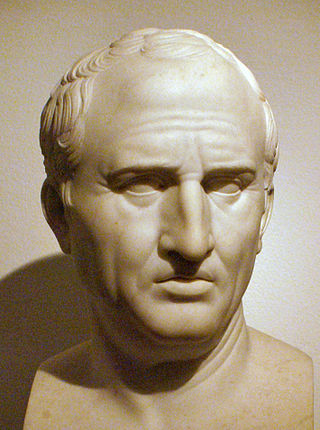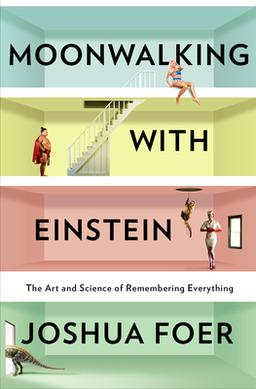
A mnemonic device or memory device is any learning technique that aids information retention or retrieval in the human memory, often by associating the information with something that is easier to remember.
The major system is a mnemonic technique used to help in memorizing numbers.
A mnemonic link system, sometimes also known as a chain method, is a method of remembering lists that is based on creating an association between the elements of that list. For example, when memorizing the list, one could create a story about a "dog stuck in an envelope, mailed to an unlucky thirteen black cat playing with yarn by the window". It is argued that the story would be easier to remember than the list itself.
The mnemonic peg system, invented by Henry Herdson, is a memory aid that works by creating mental associations between two concrete objects in a one-to-one fashion that will later be applied to to-be-remembered information. Typically this involves linking nouns to numbers and it is common practice to choose a noun that rhymes with the number it is associated with. These will be the pegs of the system. These associations have to be memorized one time and can be applied repeatedly to new information that needs to be memorized.

The VIC cipher was a pencil and paper cipher used by the Soviet spy Reino Häyhänen, codenamed "VICTOR".
Memorization is the process of committing something to memory. It is a mental process undertaken in order to store in memory for later recall visual, auditory, or tactical information.
Provisional designation in astronomy is the naming convention applied to astronomical objects immediately following their discovery. The provisional designation is usually superseded by a permanent designation once a reliable orbit has been calculated. Approximately 47% of the more than 1,100,000 known minor planets remain provisionally designated, as hundreds of thousands have been discovered in the last two decades.
Piphilology comprises the creation and use of mnemonic techniques to remember many digits of the mathematical constant π. The word is a play on the word "pi" itself and of the linguistic field of philology.
In cognitive psychology, chunking is a process by which small individual pieces of a set of information are bound together to create a meaningful whole later on in memory. The chunks, by which the information is grouped, are meant to improve short-term retention of the material, thus bypassing the limited capacity of working memory and allowing the working memory to be more efficient. A chunk is a collection of basic units that are strongly associated with one another, and have been grouped together and stored in a person's memory. These chunks can be retrieved easily due to their coherent grouping. It is believed that individuals create higher-order cognitive representations of the items within the chunk. The items are more easily remembered as a group than as the individual items themselves. These chunks can be highly subjective because they rely on an individual's perceptions and past experiences, which are linked to the information set. The size of the chunks generally ranges from two to six items but often differs based on language and culture.

ROYGBIV is an acronym for the sequence of hues commonly described as making up a rainbow: red, orange, yellow, green, blue, indigo, and violet. When making an artificial rainbow, glass prism is used, but the colors of "ROY-G-BIV" are inverted to VIB-G-YOR". There are several mnemonics that can be used for remembering this color sequence, such as the name "Roy G. Biv" or sentences such as "Richard of York Gave Battle in Vain".

The method of loci is a strategy for memory enhancement, which uses visualizations of familiar spatial environments in order to enhance the recall of information. The method of loci is also known as the memory journey, memory palace, journey method, memory spaces, or mind palace technique. This method is a mnemonic device adopted in ancient Roman and Greek rhetorical treatises. Many memory contest champions report using this technique to recall faces, digits, and lists of words.
The title mnemonist refers to an individual with the ability to remember and recall unusually long lists of data, such as unfamiliar names, lists of numbers, entries in books, etc. Some mnemonists also memorize texts such as long poems, speeches, or even entire books of fiction or non-fiction. The term is derived from the term mnemonic, which refers to a strategy to support remembering, but not all mnemonists report using mnemonics. Mnemonists may have superior innate ability to recall or remember, in addition to relying on techniques.
Memory has the ability to encode, store and recall information. Memories give an organism the capability to learn and adapt from previous experiences as well as build relationships. Encoding allows a perceived item of use or interest to be converted into a construct that can be stored within the brain and recalled later from long-term memory. Working memory stores information for immediate use or manipulation, which is aided through hooking onto previously archived items already present in the long-term memory of an individual.

MSI is a barcode symbology developed by the MSI Data Corporation, based on the original Plessey Code symbology. It is a continuous symbology that is not self-checking. MSI is used primarily for inventory control, marking storage containers and shelves in warehouse environments.
The PGP Word List is a list of words for conveying data bytes in a clear unambiguous way via a voice channel. They are analogous in purpose to the NATO phonetic alphabet, except that a longer list of words is used, each word corresponding to one of the 256 distinct numeric byte values.
Metamemory or Socratic awareness, a type of metacognition, is both the introspective knowledge of one's own memory capabilities and the processes involved in memory self-monitoring. This self-awareness of memory has important implications for how people learn and use memories. When studying, for example, students make judgments of whether they have successfully learned the assigned material and use these decisions, known as "judgments of learning", to allocate study time.
Exceptional memory is the ability to have accurate and detailed recall in a variety of ways, including hyperthymesia, eidetic memory, synesthesia, and emotional memory. Exceptional memory is also prevalent in those with savant syndrome and mnemonists.
Memory sport, sometimes referred to as competitive memory or the mind sport of memory, refers to competitions in which participants attempt to memorize then recall different forms of information, under certain guidelines. The sport has been formally developed since 1991 and features national and international championships. The primary worldwide organizational bodies are the IAM and WMSC.

Moonwalking with Einstein: The Art and Science of Remembering Everything is a nonfiction book by Joshua Foer, first published in 2011. Moonwalking with Einstein debuted at number 3 on the New York Times bestseller list and stayed on the list for 8 weeks.
Elaborative encoding is a mnemonic system that uses some form of elaboration, such as an emotional cue, to assist in the retention of memories and knowledge. In this system one attaches an additional piece of information to a memory task which makes it easier to recall. For instance, one may recognize a face easier if character traits are also imparted about the person at the same time.





